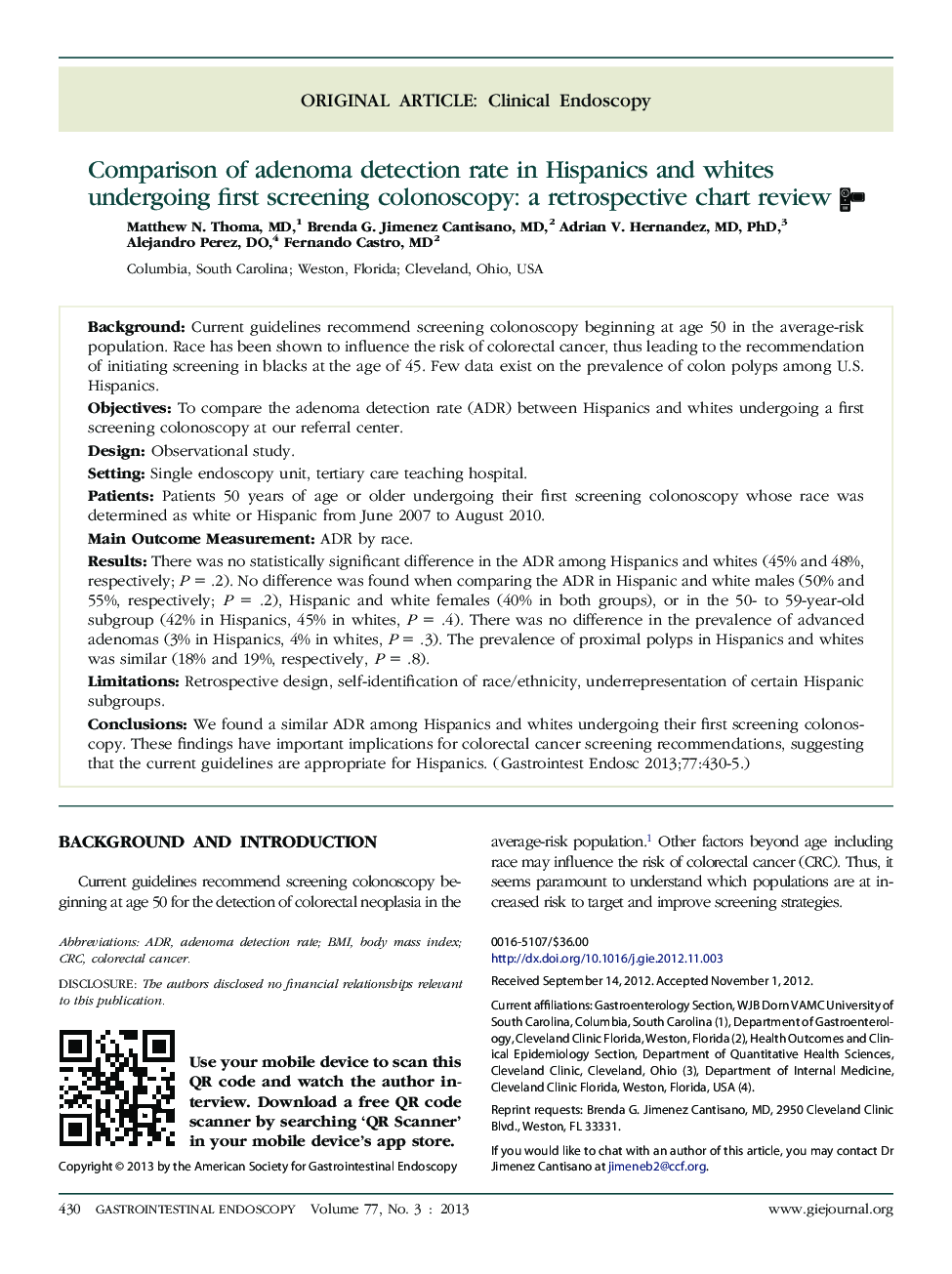| Article ID | Journal | Published Year | Pages | File Type |
|---|---|---|---|---|
| 3304113 | Gastrointestinal Endoscopy | 2013 | 6 Pages |
BackgroundCurrent guidelines recommend screening colonoscopy beginning at age 50 in the average-risk population. Race has been shown to influence the risk of colorectal cancer, thus leading to the recommendation of initiating screening in blacks at the age of 45. Few data exist on the prevalence of colon polyps among U.S. Hispanics.ObjectivesTo compare the adenoma detection rate (ADR) between Hispanics and whites undergoing a first screening colonoscopy at our referral center.DesignObservational study.SettingSingle endoscopy unit, tertiary care teaching hospital.PatientsPatients 50 years of age or older undergoing their first screening colonoscopy whose race was determined as white or Hispanic from June 2007 to August 2010.Main Outcome MeasurementADR by race.ResultsThere was no statistically significant difference in the ADR among Hispanics and whites (45% and 48%, respectively; P = .2). No difference was found when comparing the ADR in Hispanic and white males (50% and 55%, respectively; P = .2), Hispanic and white females (40% in both groups), or in the 50- to 59-year-old subgroup (42% in Hispanics, 45% in whites, P = .4). There was no difference in the prevalence of advanced adenomas (3% in Hispanics, 4% in whites, P = .3). The prevalence of proximal polyps in Hispanics and whites was similar (18% and 19%, respectively, P = .8).LimitationsRetrospective design, self-identification of race/ethnicity, underrepresentation of certain Hispanic subgroups.ConclusionsWe found a similar ADR among Hispanics and whites undergoing their first screening colonoscopy. These findings have important implications for colorectal cancer screening recommendations, suggesting that the current guidelines are appropriate for Hispanics.
